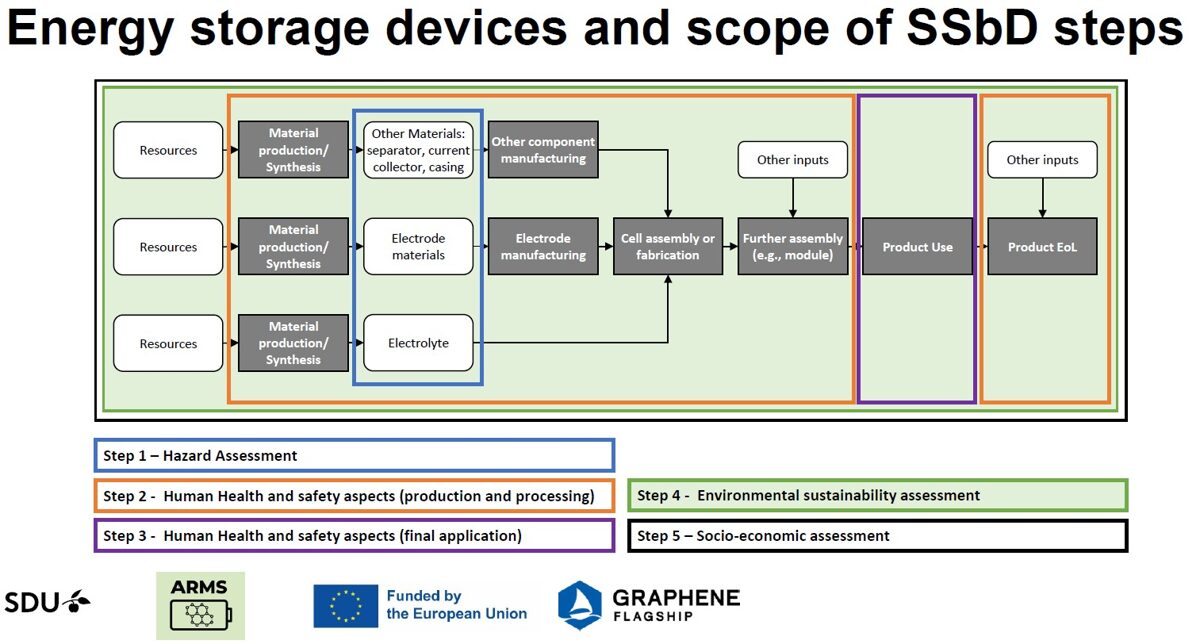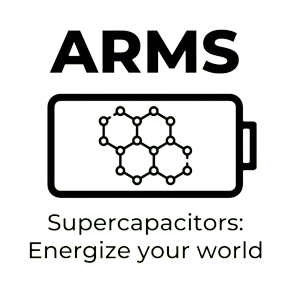Designing Safety: SDU’s Role in Building the SSbD Framework

Mapping SSbD Across the Lifecycle of Energy Storage Devices
Within the ARMS project, the team from the University of Southern Denmark (SDU) is currently focused on developing and testing a robust, transparent, and user-friendly approach to safety assessment, which represents the first part of the Safe and Sustainable by Design (SSbD) framework. Our aim is to explore how various tools and data sources can be integrated to deliver consistent, reliable, and meaningful results that support safe material innovation.
A key challenge lies in evaluating the strengths and limitations of different hazard assessment tools, such as the VEGA Hub. Each tool operates based on distinct models and assumptions, so part of our work involves comparing their outputs and assessing their reliability. To ensure consistency, we also incorporate information from safety data sheets, which serve as a baseline for cross-checking model-generated results. This approach helps us identify where tools converge, where they differ, and how these differences can be communicated transparently within the SSbD framework.
For exposure assessment, we are developing an independent data collection framework in collaboration with other ARMS work packages. This is a demanding yet rewarding process, involving multiple rounds of data correction, updating, and refinement. Our goal is to make exposure assessment feasible and consistent—even when detailed data are limited—marking an important step toward a unified and practical SSbD approach.
Through this iterative process, we’ve learned that achieving SSbD is not just about building models or compiling datasets. It’s equally about fostering coherence and trust across diverse sources of knowledge.
